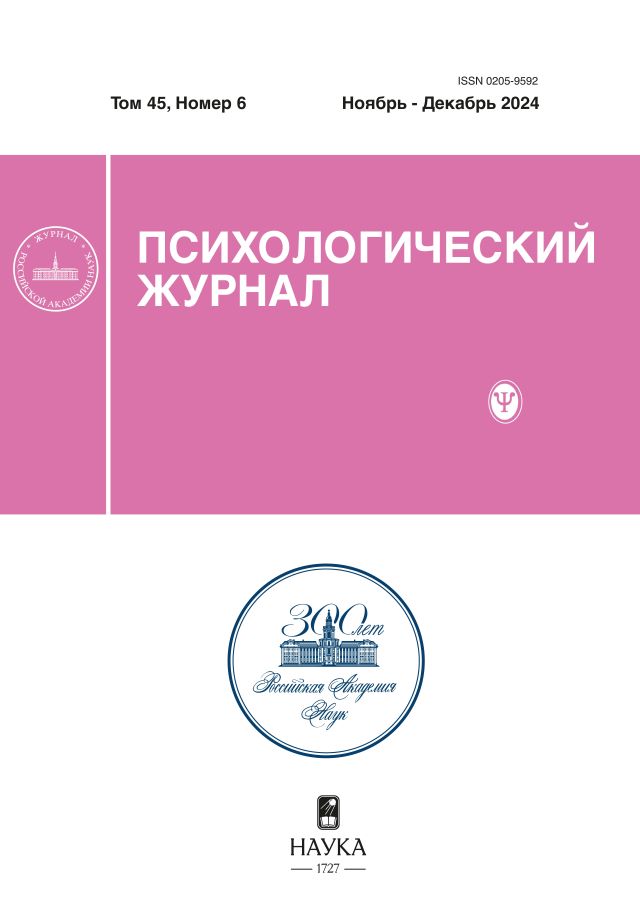Application of the Spatial Hearing Questionnaire (SHQ) for Communicants in Two Age Groups
- 作者: Andreeva I.G.1, Klishova E.A.1, Lunichkin A.M.1
-
隶属关系:
- Sechenov Institute of Evolutionary Physiology and Biochemistry of the Russian Academy of Sciences
- 期: 卷 45, 编号 6 (2024)
- 页面: 95-104
- 栏目: Methodes and procedures
- URL: https://rjonco.com/0205-9592/article/view/677589
- DOI: https://doi.org/10.31857/S0205959224060091
- ID: 677589
如何引用文章
详细
Binaural hearing, which is based on the processing of fine temporal structure of a signal, declines with age, which may have consequences for communication and socialization. The Spatial Hearing Questionnaire (SHQ) is widely used in world practice, but previously has not been used to identify age-related changes in the perception of communicative situations. This study is aimed at determining the validity of the questionnaire and its sensitivity to the age of the respondent. The survey involved 113 respondents with normal hearing, divided into two groups 113: (1) young, (2) middle and old age. Factor analysis revealed five factors that influence the perception of communicative situations. Analysis of the subscales of the SHQ questionnaire did not reveal significant differences in the studied groups of respondents. Normative data from the SHQ questionnaire were obtained for communicators in a wide age range — from 18 to 75 years.
全文:
作者简介
I. Andreeva
Sechenov Institute of Evolutionary Physiology and Biochemistry of the Russian Academy of Sciences
编辑信件的主要联系方式.
Email: ig-andreeva@mail.ru
ScD (in Biology), Chief Researcher, Laboratory of Comparative Physiology of Sensory Systems
俄罗斯联邦, 194223, Saint Petersburg, Torez Ave., 44E. Klishova
Sechenov Institute of Evolutionary Physiology and Biochemistry of the Russian Academy of Sciences
Email: klishova@gmail.com
Graduate Student, Laboratory of Comparative Physiology of Sensory Systems
俄罗斯联邦, 194223, Saint Petersburg, Torez Ave., 44A. Lunichkin
Sechenov Institute of Evolutionary Physiology and Biochemistry of the Russian Academy of Sciences
Email: bolverkdc@mail.ru
PhD (in Biology), Researcher, Laboratory of Comparative Physiology of Sensory Systems
俄罗斯联邦, 194223, Saint Petersburg, Torez Ave., 44参考
- Vladimirova T.Yu., Martynova A.B., Barbasheva S.S. Validaciya i perspektivy primeneniya russkoyazychnoj versii oprosnika prostranstvennogo sluha (SHQ). Aspirantskij vestnik Povolzh’ya. 2023. V. 23. № 1. P. 15–20.
- Davidson A., Souza P. Relationships Between Auditory Processing and Cognitive Abilities in Adults: A Systematic Review. Journ Speech Lang Hear R. 2024. V. 67. № 1. P. 296–345.
- Maneesriwongul W., Dixon K. Instrument translation process: a methods review. Journ Adv Nurs. 2004. V. 48. № 2. P. 175–186.
- Moulin A., Richard C. Validation of a French-language Version of the Spatial Hearing Questionnaire, Cluster Analysis and Comparison with the Speech, Spatial, and Qualities of Hearing Scale. Ear Hear. 2016. V. 37. № 4. P. 412–423.
- Perreau A.E. et al. The Spatial Hearing Questionnaire: Data from individuals with normal hearing. Am Journ Audiol. 2014. V. 23. № 2. P. 173– 181.
- Tyler R.S., Perreau A.E., Ji H. Validation of the Spatial Hearing Questionnaire. Ear Hear. 2009. V. 30. № 4. P. 466–474
- Whitmer W.M. et al. Hearing Aid Validation. Hearing Aids, Springer Handbook of Auditory Research 56. Eds. G.R. Popelka et al. Springer International Publishing Switzerland, 2016. P. 291–321.
补充文件













